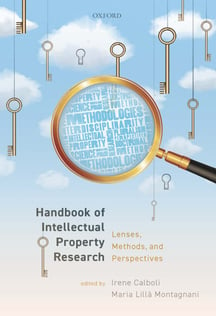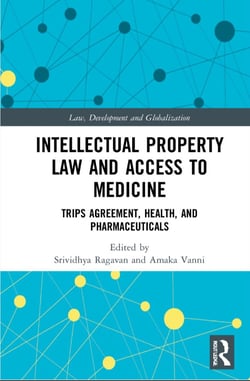Texas A&M Law Professors Irene Calboli and Srividya Ragavan were once again recognized as distinguished Intellectual Property (IP) scholars by colleagues across the world.
 Professor Calboli’s Handbook of Intellectual Property Research: Lenses, Methods, and Perspectives (Oxford University Press, M. Montagnani, Bocconi University, co-editor) was selected as one of the two winners of the IPKat's Best Books for the year 2021 in the general category IP Law. The book, which represents the most updated and comprehensive overview of the IP research methodologies, is open access, and can be downloaded at no costs from the publisher website.
Professor Calboli’s Handbook of Intellectual Property Research: Lenses, Methods, and Perspectives (Oxford University Press, M. Montagnani, Bocconi University, co-editor) was selected as one of the two winners of the IPKat's Best Books for the year 2021 in the general category IP Law. The book, which represents the most updated and comprehensive overview of the IP research methodologies, is open access, and can be downloaded at no costs from the publisher website.
“The Annual Book Awards by the IPKat Blogs are amongst the most important in the IP field and are widely recognized by IP practitioners and academics across the world. Many excellent books are nominated as finalists,” said Calboli. "This year again, the credit for the award should be given to the stellar group of contributors with whom we had the honor to work”.
This is the second year in a row Professor Calboli has won the prestigious IPKat award. Calboli’s book, The Cambridge Handbook of International and Comparative Trademark Law (Cambridge University Press, co-edited with J. Ginsburg of Columbia University), won Best Book on Trademark Law in 2020. In 2018, Calboli also won the award for the Best Book on Trademark Law for her book, The Protection of Non-Traditional Trademarks: Critical Perspectives (Oxford University Press, M. Senftleben, University of Amsterdam, co-editor).
Srividya Ragavan’s book Intellectual Property Law and Access to Medicines: TRIPS Agreement, Health, and Pharmaceuticals (Routledge, Amaka Vanni, University of Leeds, co-editor) was also nominated in the Best Books for the year 2021, in the general category IP Law.
 The edited volume maps the 25 years of TRIPS Agreement from the perspective of access to medication discourse and critically charts the changes that represent the evolution and struggles in the debates over the impact of patents, trade, and the TRIPS Agreement on access to medicine. In doing so, the book presents how both structures and actors shift conceptions of the role of IP rights (IPRs) and underscores the emergent controversies over access to medication.
The edited volume maps the 25 years of TRIPS Agreement from the perspective of access to medication discourse and critically charts the changes that represent the evolution and struggles in the debates over the impact of patents, trade, and the TRIPS Agreement on access to medicine. In doing so, the book presents how both structures and actors shift conceptions of the role of IP rights (IPRs) and underscores the emergent controversies over access to medication.
Launched in June 2003, IPKat covers copyright, patent, trademark, info-tech, privacy, and confidentiality issues from a mainly UK and European perspective. It serves as a teaching aid for intellectual property law students. The IPKat blog has become a popular source of "material, comment and amusement" for IP practitioners.